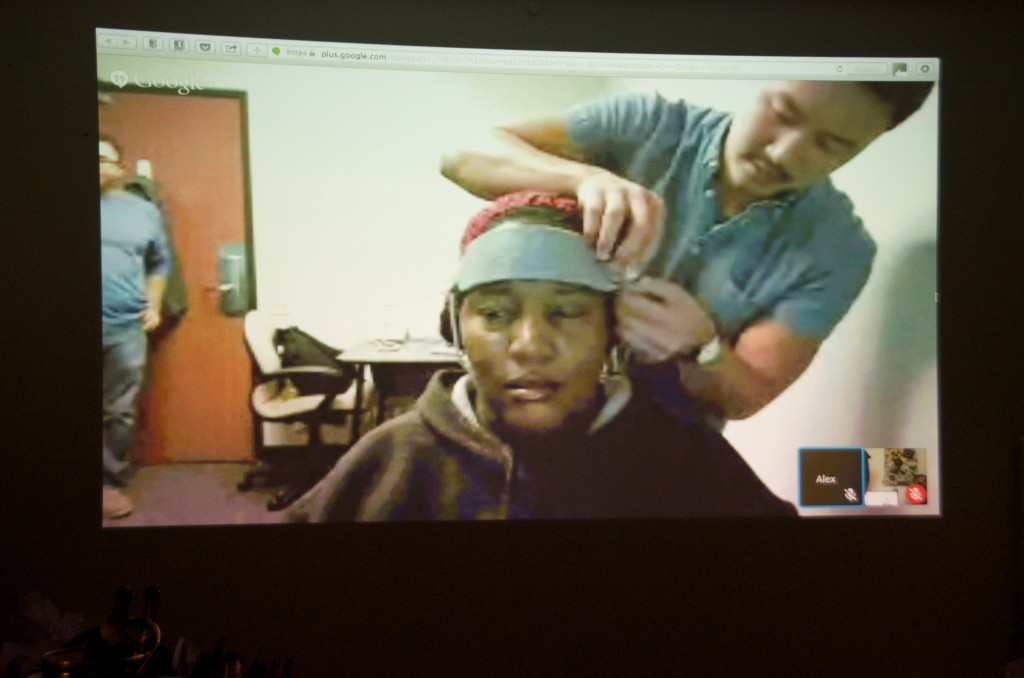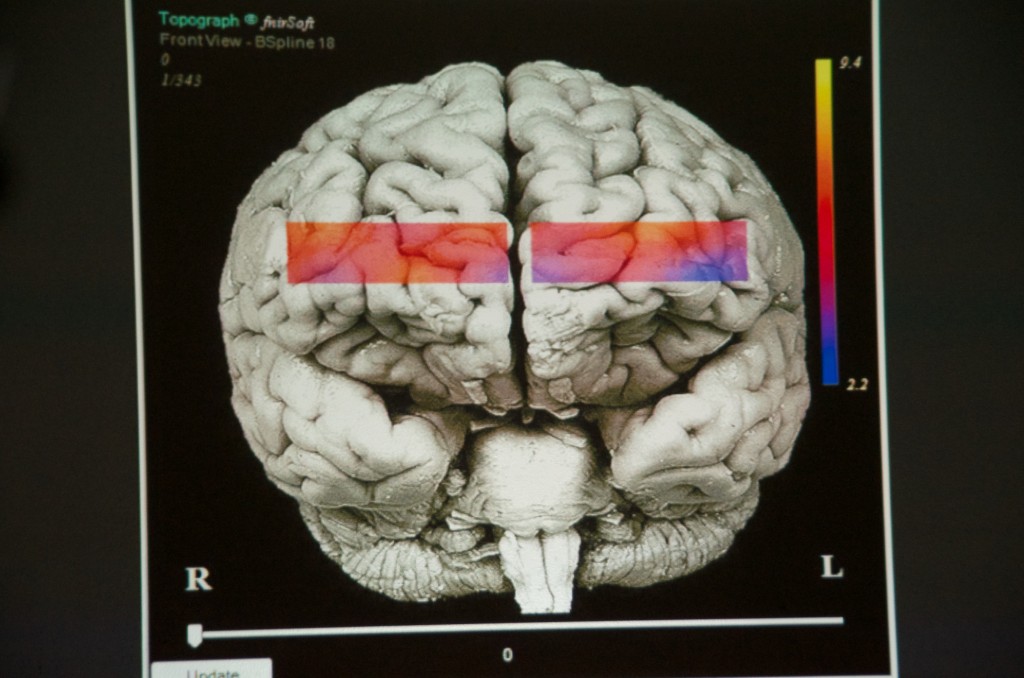By Wyahee Tucrkile

The Department of Psychology is getting a clearer picture of how the mind reacts to different tasks and stimuli thanks to a new piece of equipment called the functional near-infrared spectroscopy, also known as the fNIR. The department showcased its new acquisition during an open house at the George Marsh Applied Cognition (GMAC) Laboratory on Nov. 19.
“This is a relatively new optical brain imaging technique that allows for real time recordings of brain activity in the cortical areas of the prefrontal cortex,” says Aimee Miller, a second-year clinical psychology graduate student at CSU Dominguez Hills. “The advantages of fNIR is that it is relatively inexpensive compared to MRIs or PET scans. It’s portable, small, and does not require the subject to remain motionless unlike MRIs.”
The main component of the fNIR is a band that is placed on the forehead right above the eyebrows. Sixteen sensors in the band measure changes in blood oxygenation to the participant’s prefrontal cortex while he or she performs tasks. According to Miller, in the time the task is being performed, the part of the brain that is being used should be expected to have greater amounts of oxygen in the blood than the part that isn’t as active.
Professor of psychology Larry Rosen said the fNIR is a great way to look at the brain in action.
“The fNIR is really good at showing two things. One is how hard you are working on a task, your working memory. And that’s very important because you want people working very hard on things,” Rosen stated, “And the second thing is it handles and deals with attention and focus so you can see when someone is attending or when they lose their focus and stop attending.”
Rosen, who studies the psychology of technology, said he is particularly interested in seeing such things as the extent that a phone buzzing in a student’s pocket while he or she studies captures their attention and distracts them.

While the Department of Psychology owns the fNIR, the device is available to any faculty member or student who is interested in how the brain works, said professor of psychology department chair Mark Carrier.
“The goal is for this to be a campus resource. Anybody who is doing research and would like to look at brain activity associated with the prefrontal cortex will be able to sign up and use the equipment,” Carrier explains. “We want it to not just be for psychology but to be for other departments as well maybe graduate students working on their projects and other programs might want to have a chance to use it.”
This is a fairly new technological tool being used in neuropsychology, Miller said, adding, “The fact that Dominguez can contribute to the field with such new technology is really exciting for us.”